Multi-resolution deblending with Scarlet:
Resampling, Detection and Astrometry

Rémy Joseph, Peter Melchior, Fred Moolekamp
SCMA VII: June 10 2021
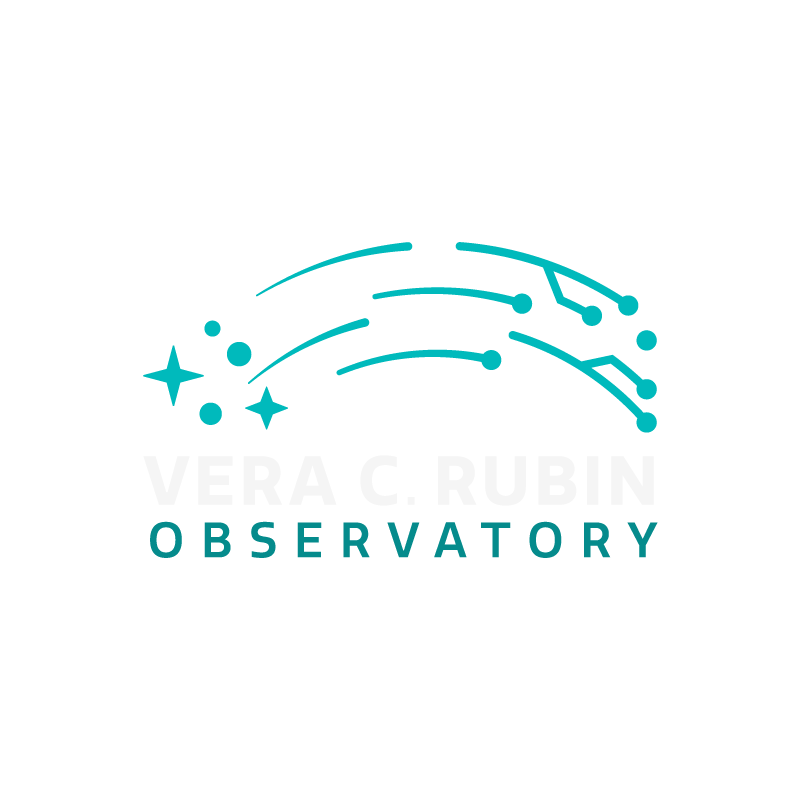

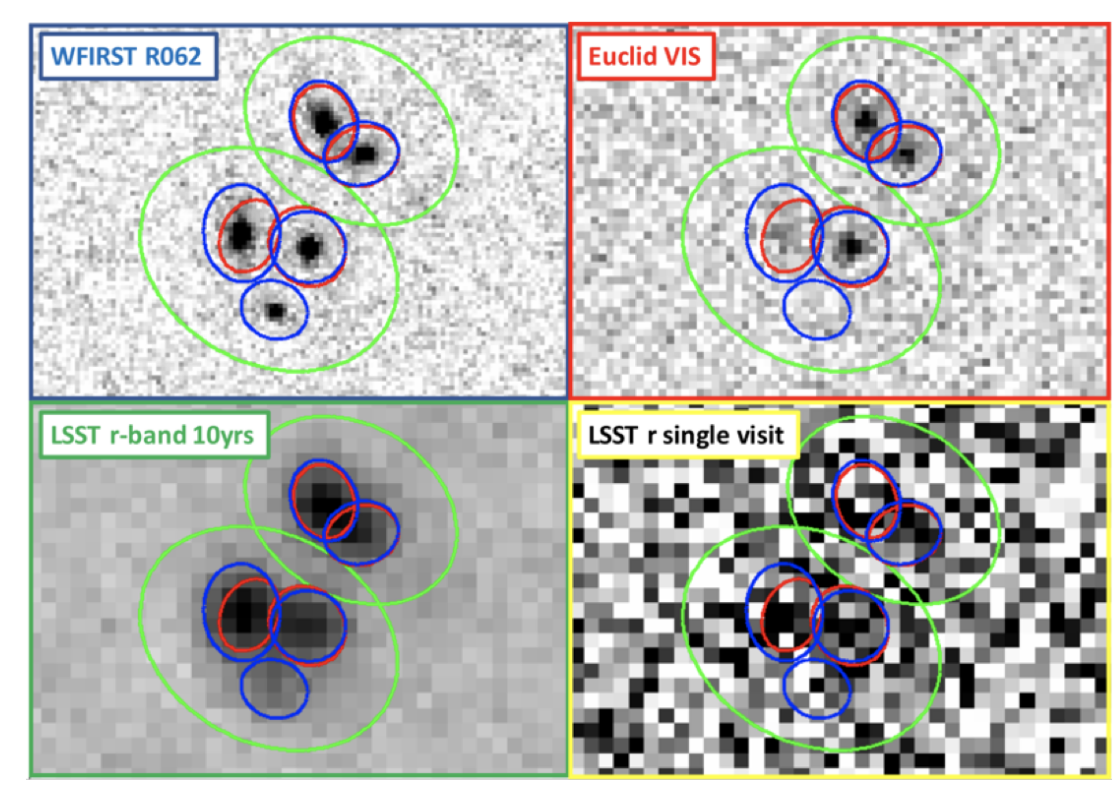
Credit: Ranga Ram Chary
Scarlet default:
Multi-band deblending

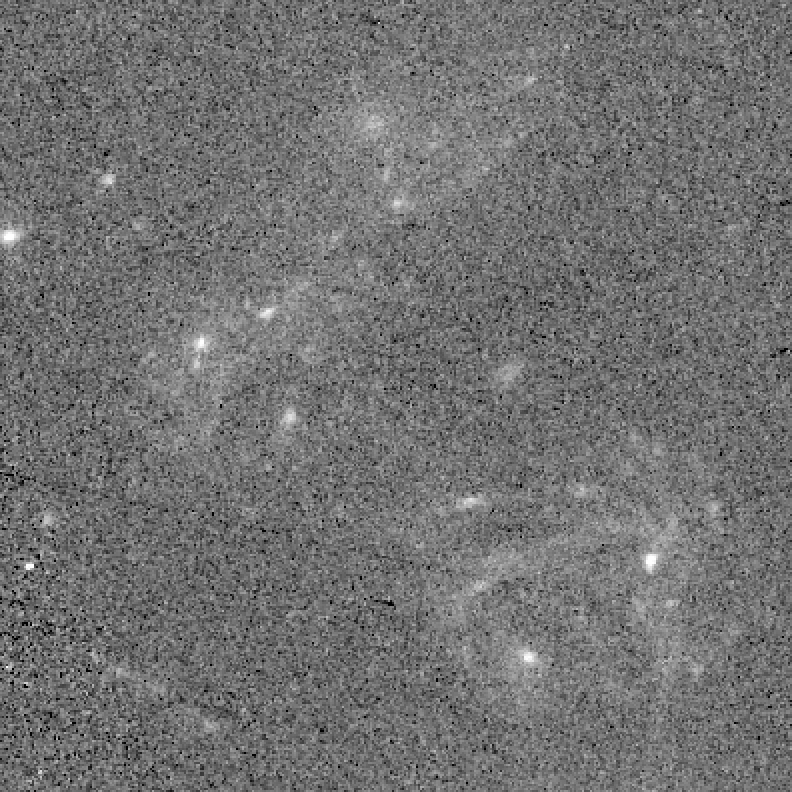
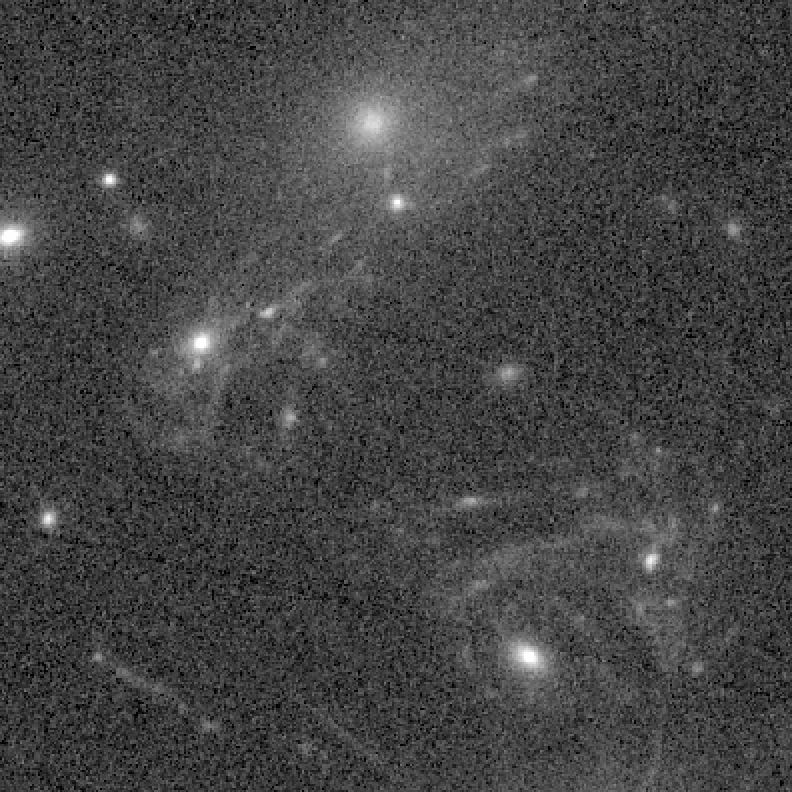
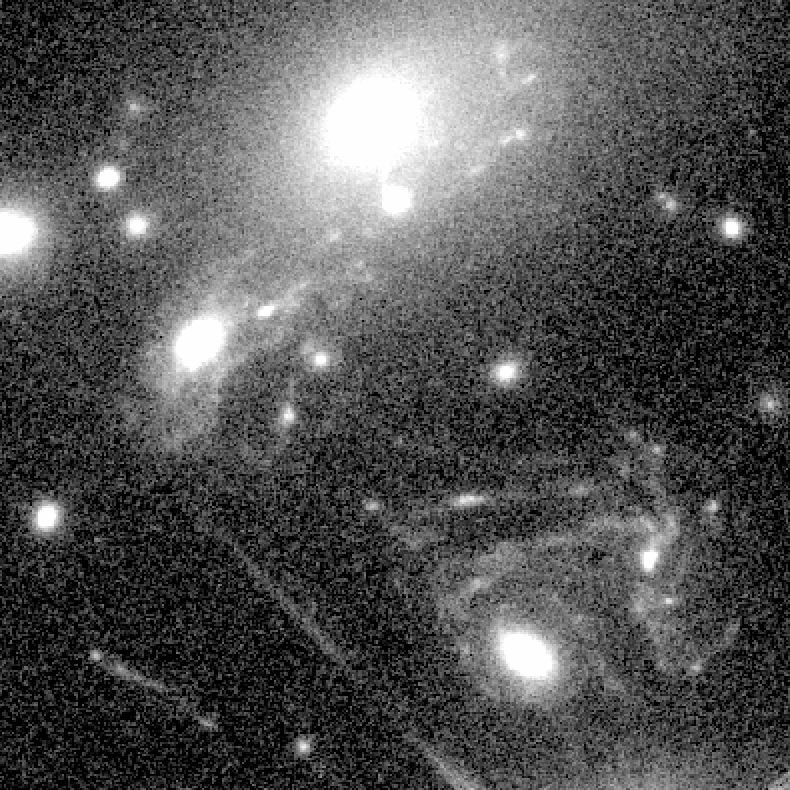
F435w
F606w
F814w
NASA/ESA: Hubble Frontier Fields, MACSJ 1149, Lotz et al. (2016)
- RGB images are collections of band in different filters
SCARLET
- Colour-based: each band is a linear combination of monochromatic components
F435w: \(I_2\)
F606w: \(I_1\)
F814w: \(I_0\)
$$I_j = H_j * \sum_i a_{j,i}m_i + N_j$$
$$m_0$$
$$m_1$$
$$I$$
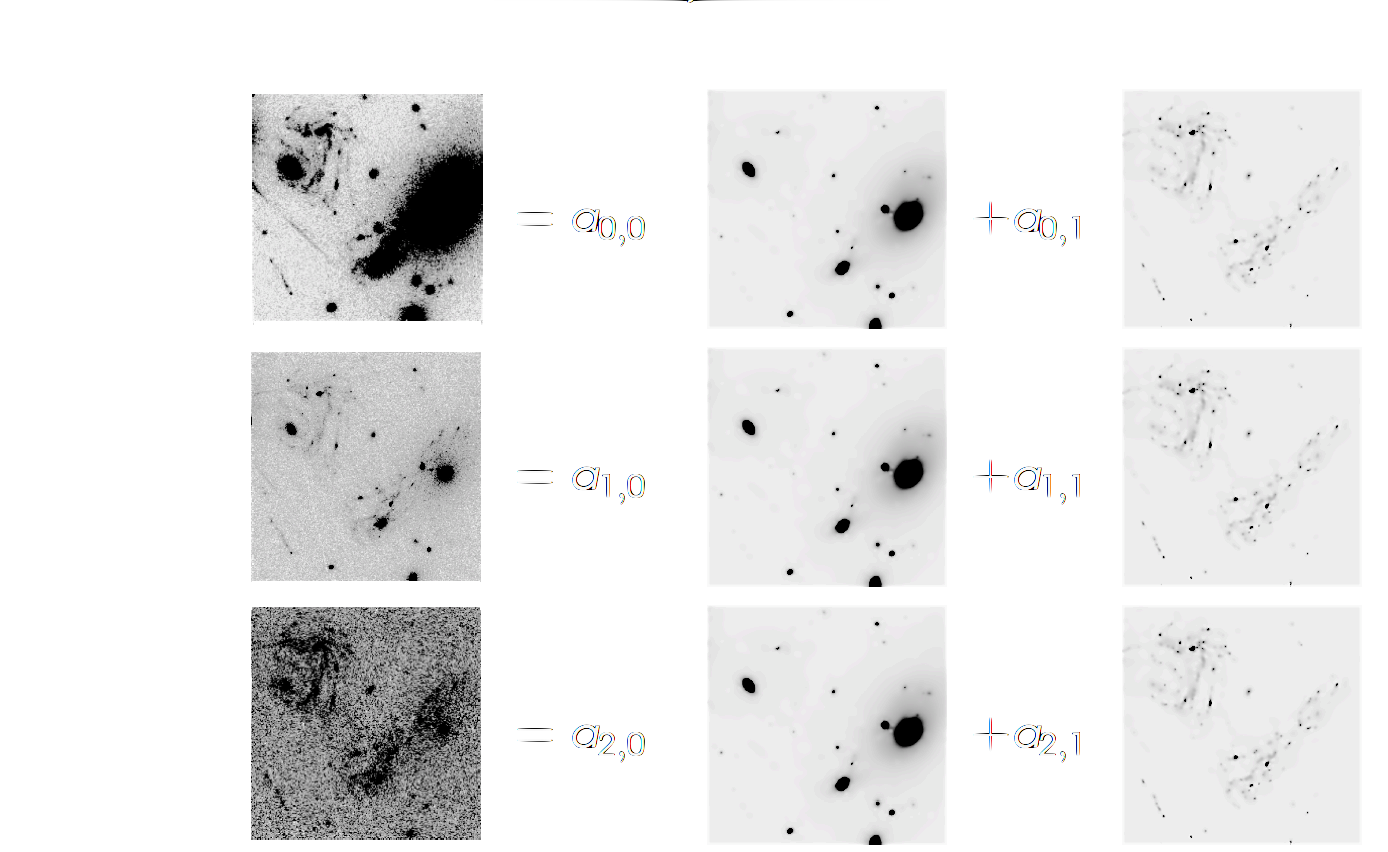
SCARLET
Melchior et al. 2016 ( arXiv:1802.10157)

Constrained optimisation: Positivity, Monotonicity, Bounding.
pixels
wavelength
pixels
pixels
Multi-resolution deblending: Same idea, different resolutions
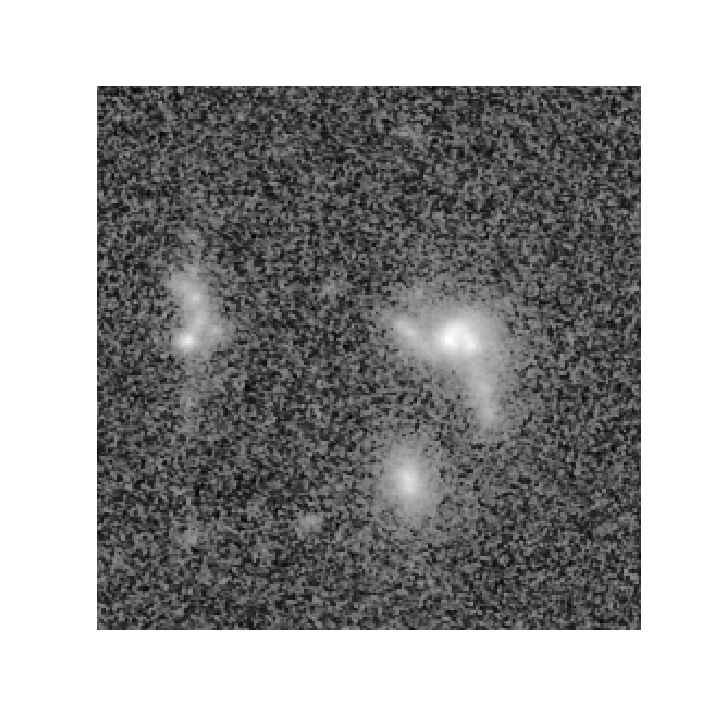
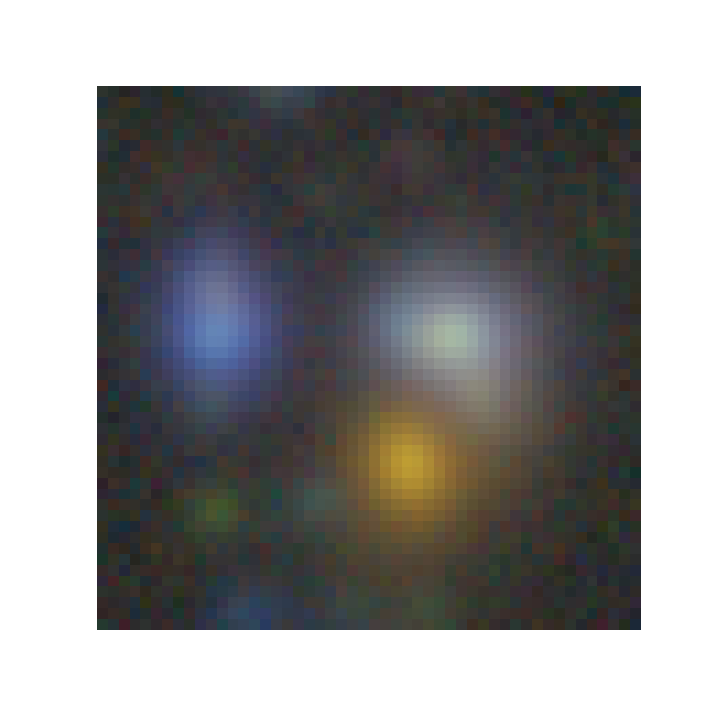
HST cosmos, F814w
HSC DR2, grizy
\(Y_1\):
\(Y_2\):
pixels
Interpolation at different resolution
Astronomical images have different samplings & different PSFs!!
We construct a common model m and the adequate operators to fit both datasets
$$I^{hr}_j = H_j * \sum_i a^{hr}_{j,i}m_i + N^{hr}_j$$
$$I^{lr}_j = R_j * \sum_i a^{lr}_{j,i}m_i + N^{lr}_j$$


Interpolation at different resolution
Resampling and difference convolution can be done as one operation with a sinc kernel (Shannon-Whitaker interpolation):
Interpolation with difference kernel as the interpolation kernel.
\(R_j(x,y) = \mathcal{F}^{-1}(\frac{\tilde{h_j}^{lr}}{\tilde{h}^{hr}})(x,y)\)
$$I^{lr}_j = R_j . \sum_i a_{j,i}m_i + N_j$$


The problem of speed
\(I^{lr}(X, Y) = \sum_{x_k, y_j} m^{hr}(x_k, y_j) r(X-x_k, Y-y_j)\)
\((X,Y)\) and \((x_k, y_j)\) are not on the same grid.
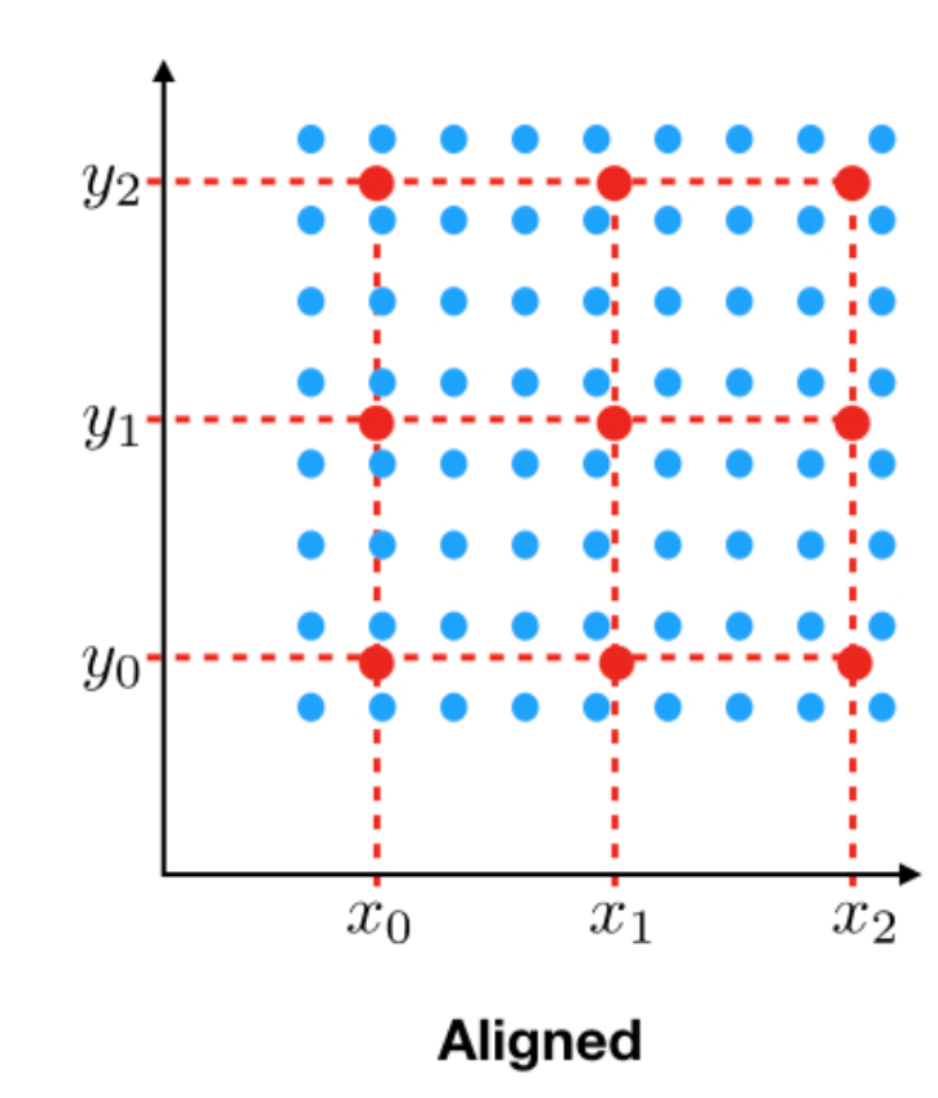


The problem of speed
\(f_2(X, Y) = \sum_{x_k, y_j} f_1(X-x_k, y_j) r(X, Y-y_j)\)
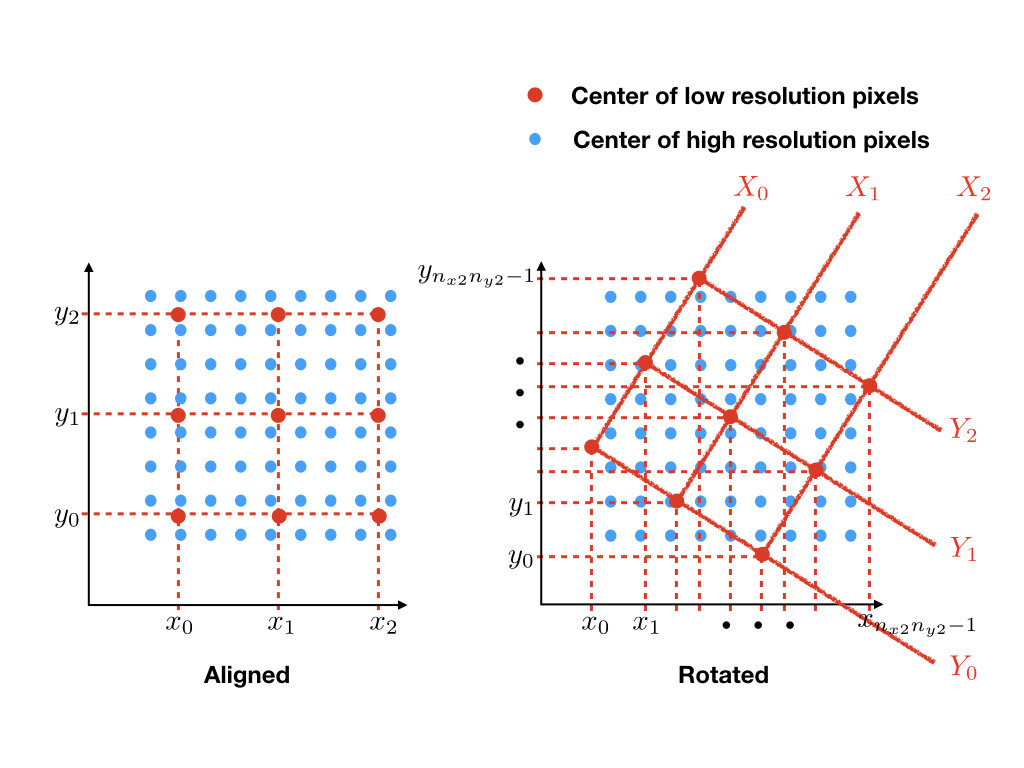
As many operations as there are distances between red and blue points, i.e. \(M^2N^2\)
M
N
Comparison with galsim:
Galsim quintic interpolation:
Interpolation kernel is reduced to a quintic kernel of size kxk = 6x6. requires s=4-fold padding.
Complexities:
- Galsim's default: $$O(N^2(k^2+s^2log(sN))+M^2(3+log(M)))$$
- Scarlet: $$O(N^2(M+1)(log(N)+M))$$
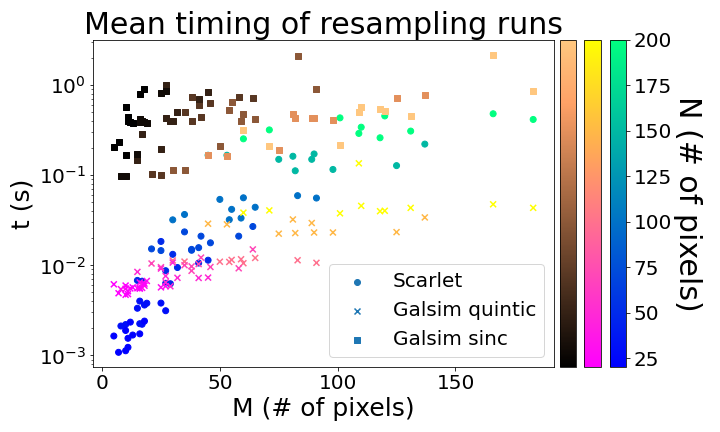
Comparison with galsim:
Reconstructions
Comparison of source distortion ratios between Galsim's default and Scarlet interpolations
$$SDR(\tilde{X}) = 10\log_{10}(\frac{||X_{true}||}{||\tilde{X} - X_{true}||} )$$
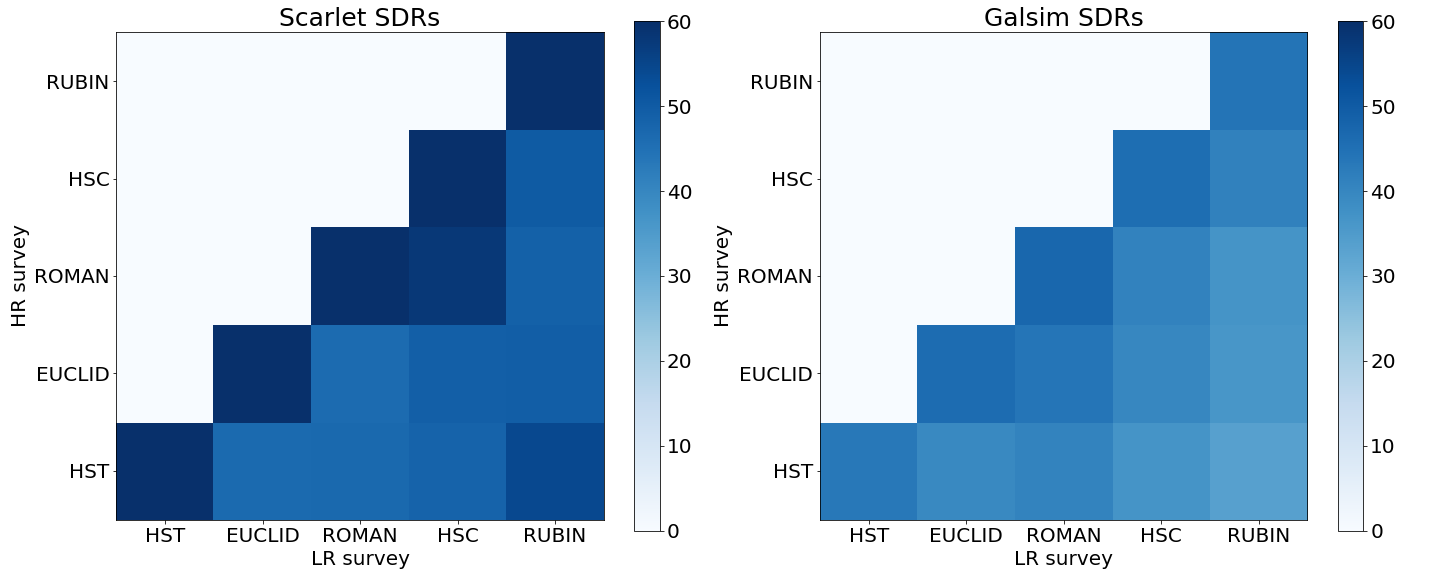

Multi-resolution vs single resolution
Experimental test results on simulations (EUCLID+RUBIN):
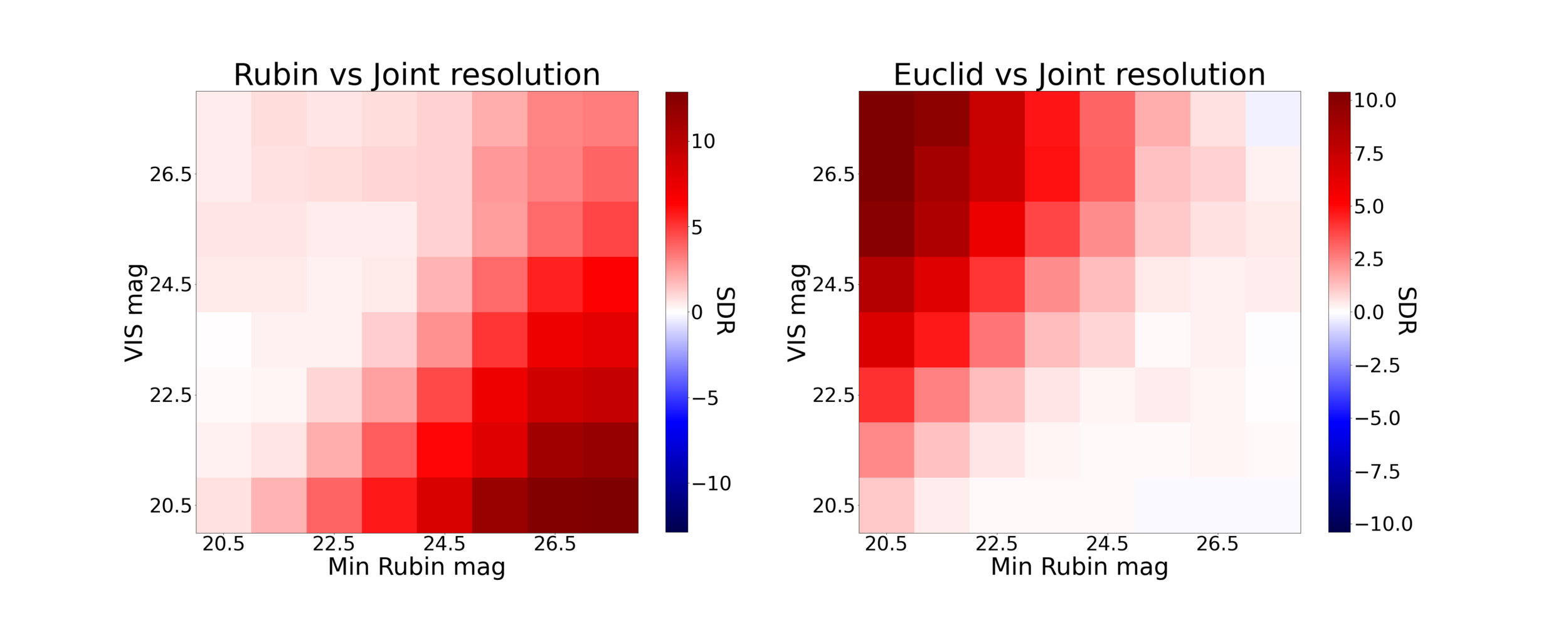

The problem of detection

Credit: Ranga Ram Chary
The problem of detection
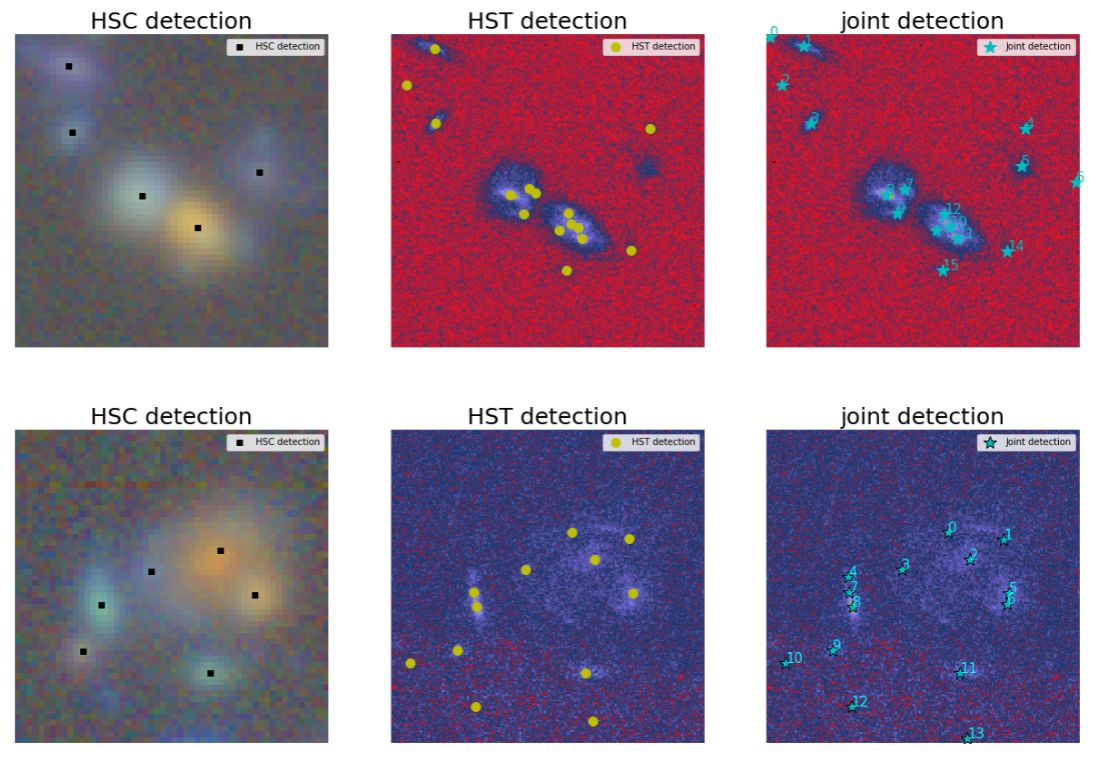


Multi-band detection with SEP:
- Build a coadd of all bands
- Apply Starlet filter to select High frequencies
- Run sep on the filtered Coadds
Multi-resolution detection
- Interpolation of low resolution image to high resolution
- Coadd interpolated images and High resolution bands
- Idem as before
Side note:
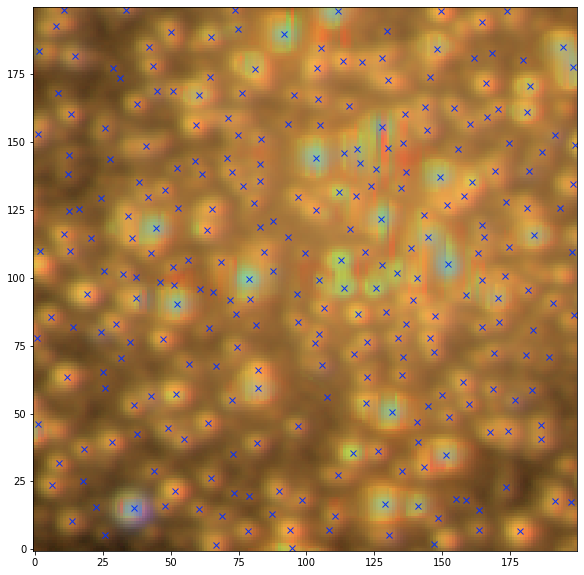
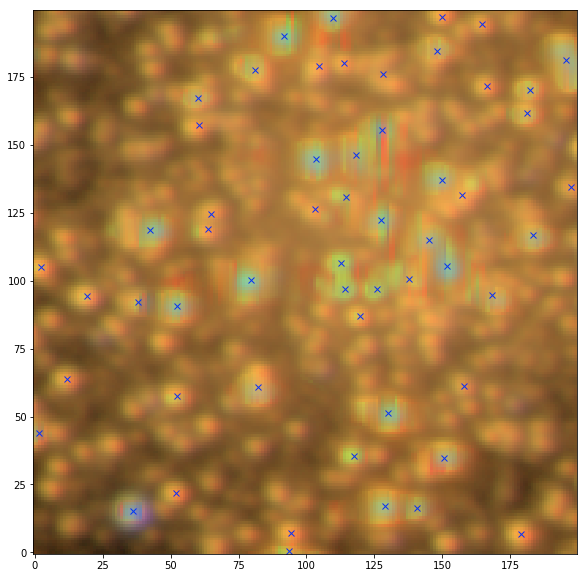
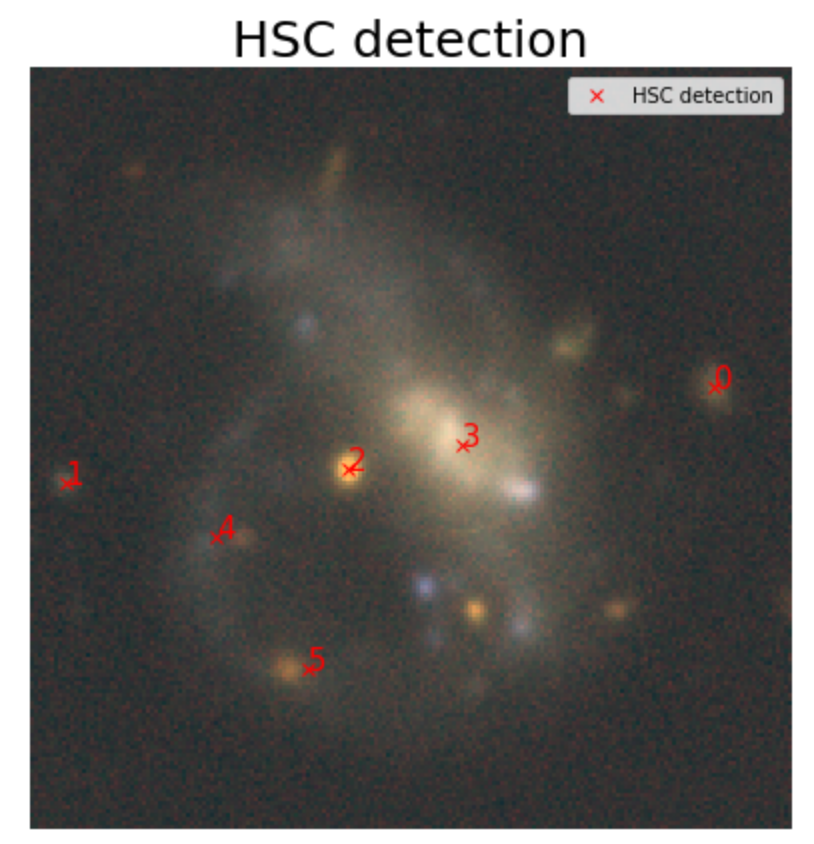
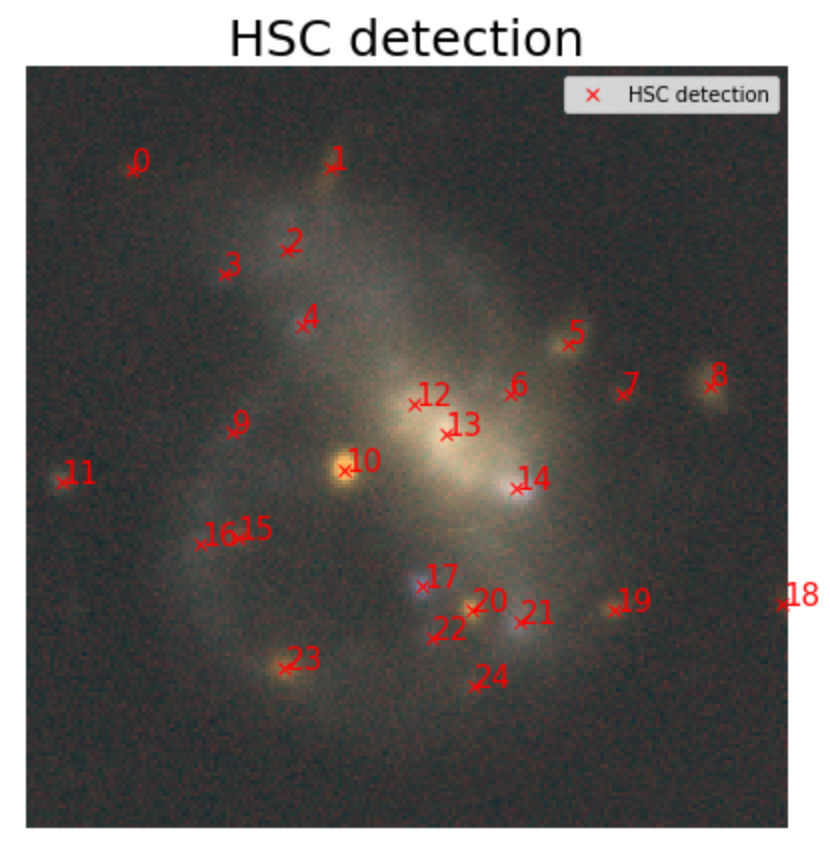
SEP detection
SEP + Starlet detection
Credit: Fred Moolekamp
Astrometry

COSMOS Fields

Matching observations, requires matching object positions
Astrometry
HST - HSC positions
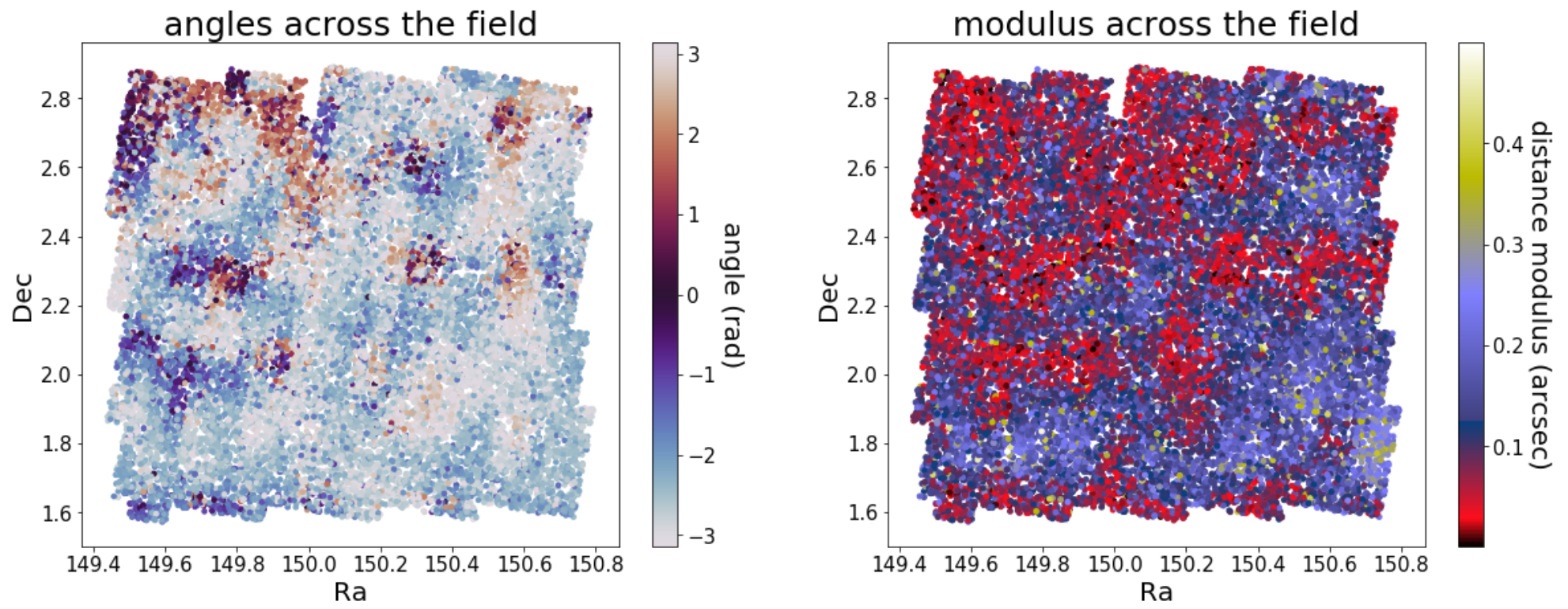
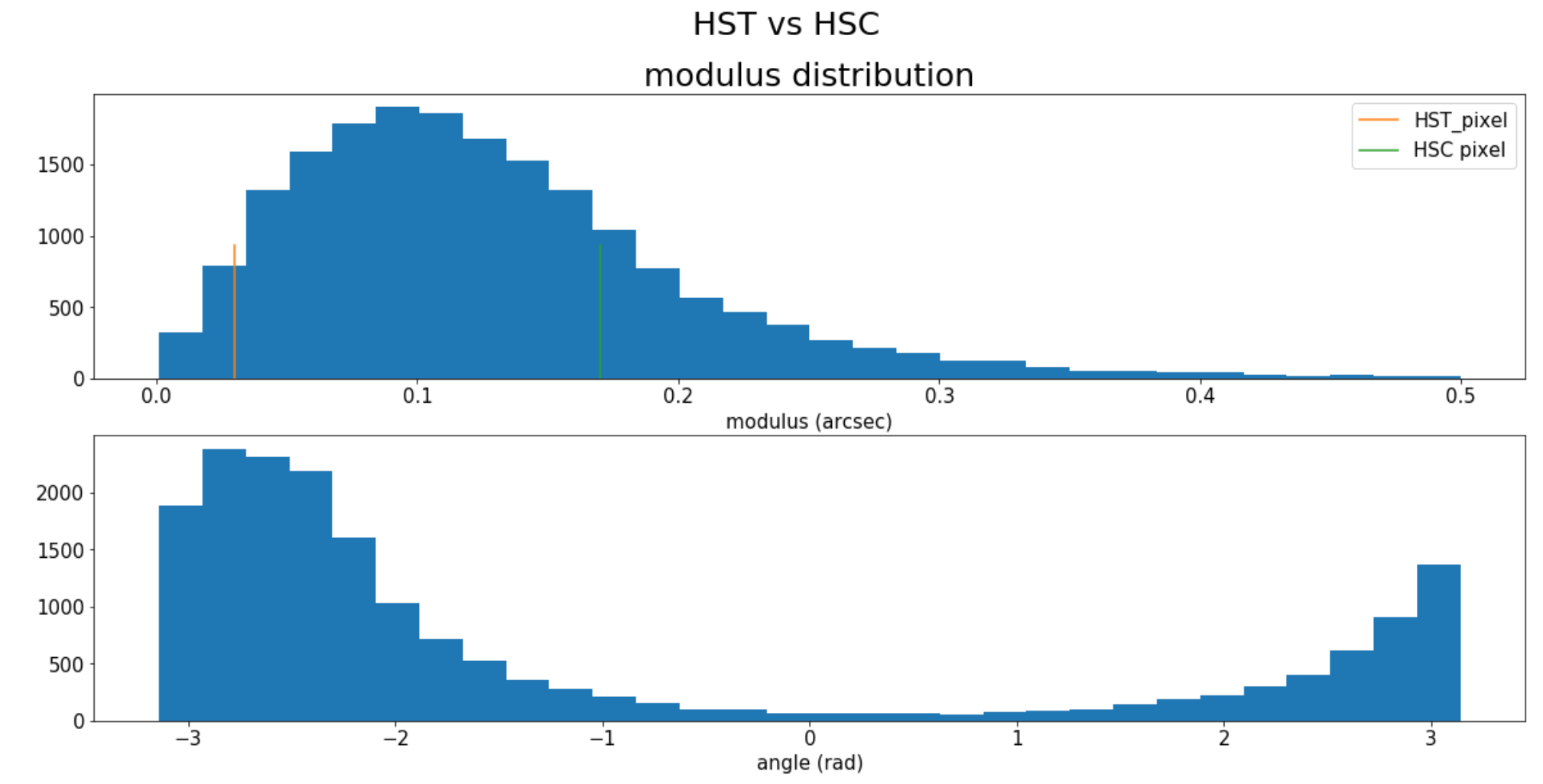
HSC s18 dud catalog
Astrometry
HSC s18 dud catalog
Gaia dr2
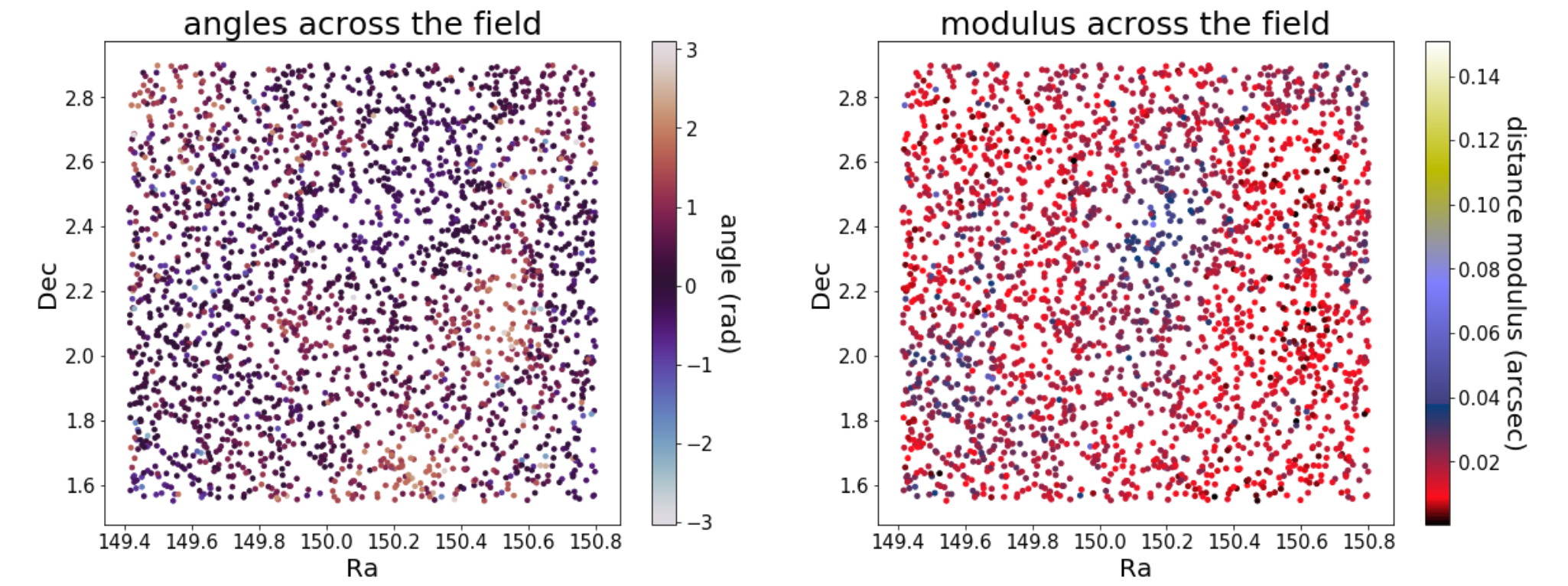
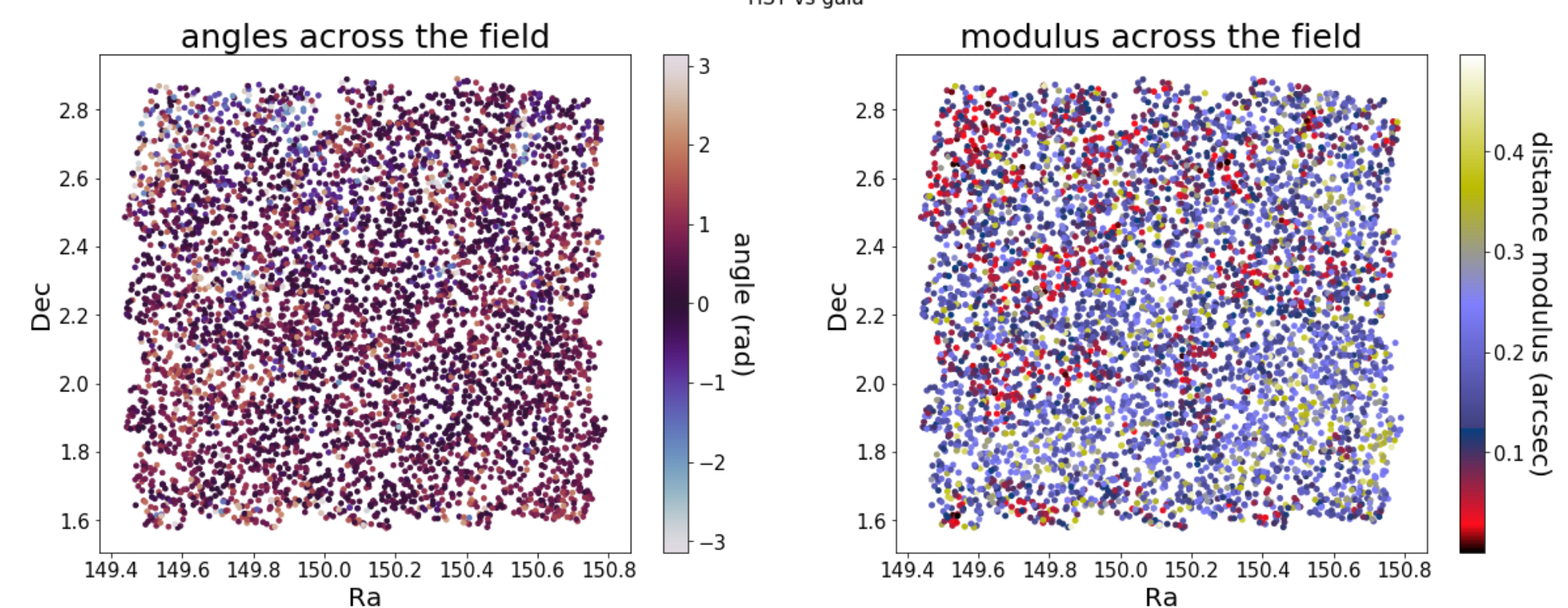
HSC - Gaia
HST - Gaia
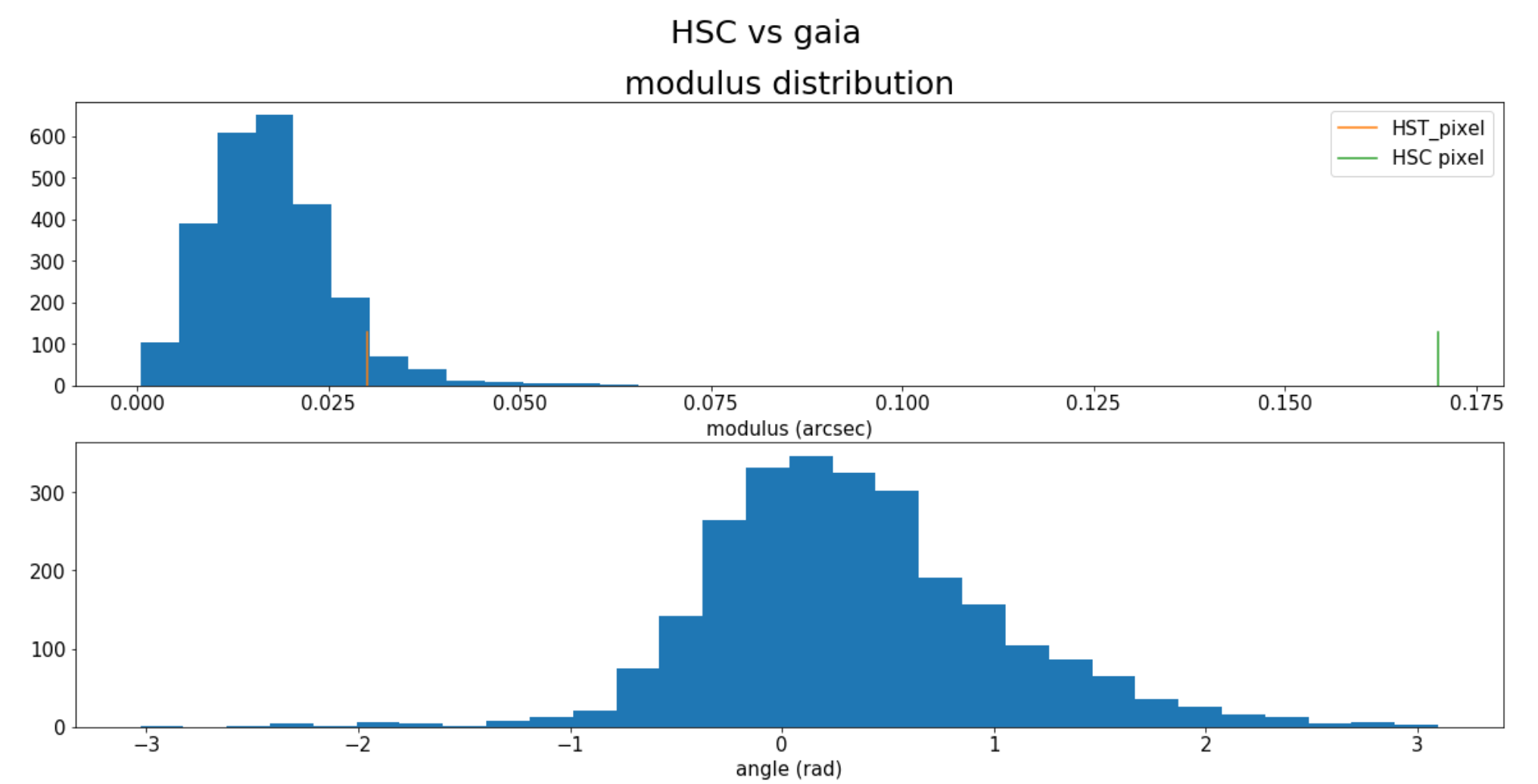
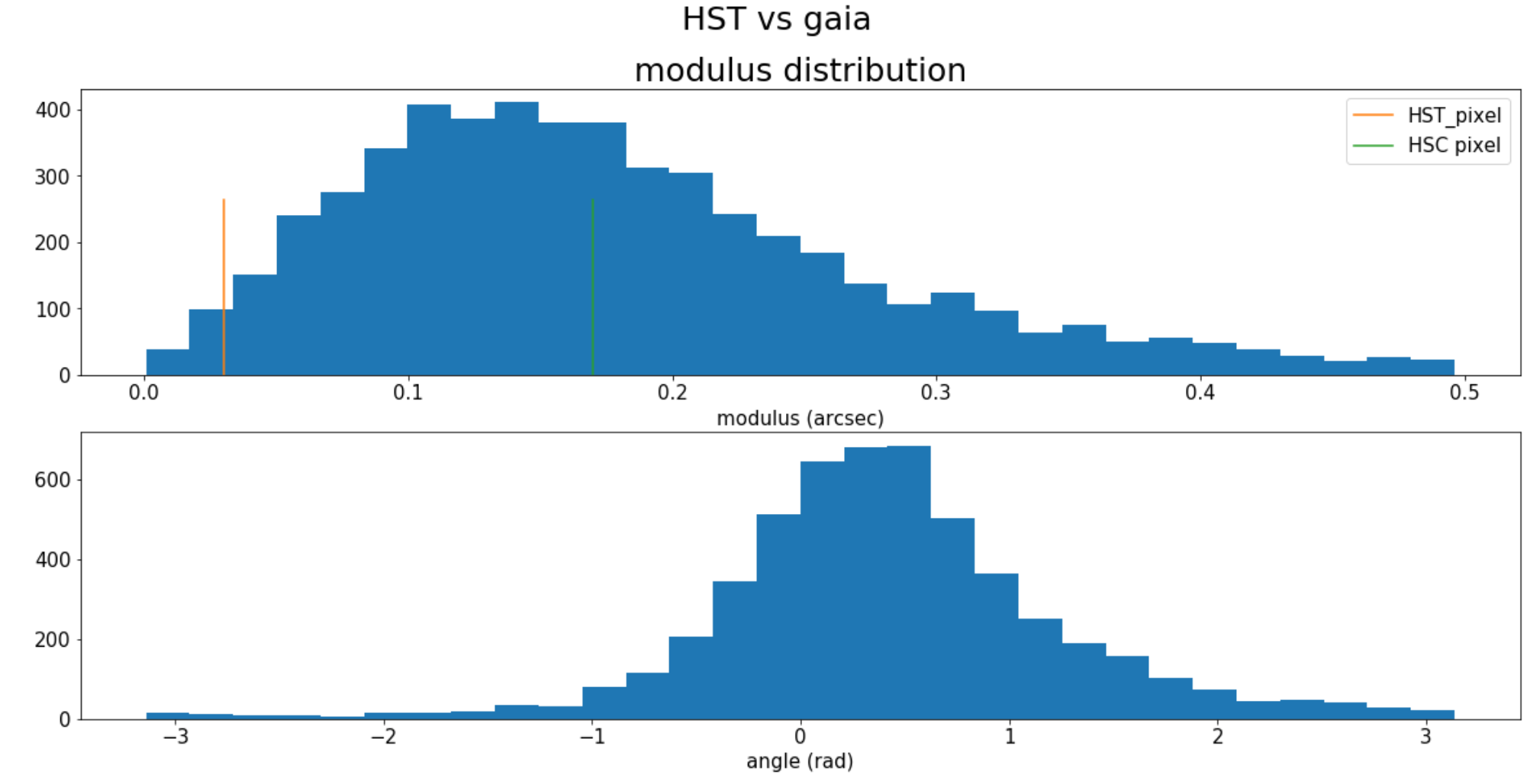
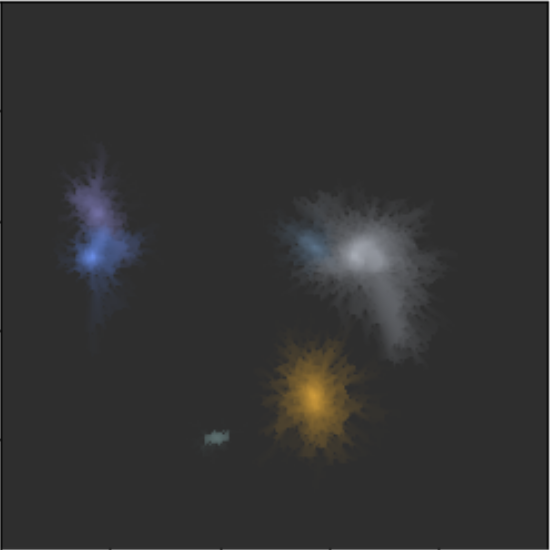


HST cosmos, F814w
HSC DR2, grizy
Scarlet model
1
2
4
3
5
6
1
2
4
3
5
6
Multi-resolution in Scarlet
Interpolation kernel is actually a sinc
\(f_2(X) = (f_1*P)(X) = (\sum_{x_k} f_1(x_k)sinc(\frac{X-x_k}{h}))*(\sum_{x_p}P(x_p)sinc(\frac{X-x_p}{h}))\)
\(f_2(X) = (f_1*P)(X) = \sum_{x_k} f_1(x_k)\sum_{x_l}P(x_l)sinc(\frac{X-x_k - x_l}{h})\)
\(f_2(X) = (f_1*P)(X) = \sum_{x_k} f_1(x_k)\sum_{x_l}P(x_l- X)sinc(\frac{x_k + x_l}{h})\)
Making sure we get the pixel response right
\(I_2(x_{i2},y_{j2}).\) = \((rect_{h_1}*(f*p_1) *{F}^{-1}(\frac{\hat{rect_{h_2}}}{\hat{rect_{h_1}}}\frac{\hat{p_2}}{\hat{p_1}}))(x_{i2},y_{j2})\)
\(I_2(x_{i2},y_{j2}) = (rect_{h_2}*p_2*f)(x_{i2},y_{j2})\)
Copy of Multi-resolution scarlet: Resampling, Detection and Astrometry
By herjy
Copy of Multi-resolution scarlet: Resampling, Detection and Astrometry
- 493


